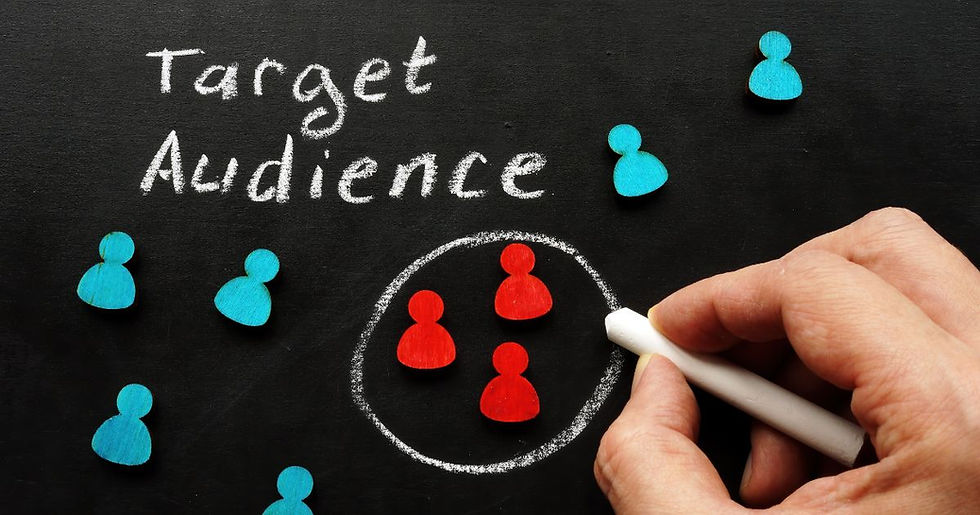How to Define Your Target Audience: A Comprehensive Guide for Marketers
- Haldun OZ

- Jun 14, 2023
- 3 min read
Updated: Jun 30, 2023
Effective marketing starts with a deep understanding of your target audience. By defining your target audience, you can tailor your marketing strategies to reach the right people with the right message. In this article, we'll explore the key steps and considerations for marketers to define their target audience successfully. By following these guidelines, you can create highly targeted campaigns that resonate with your audience and drive meaningful results.

Conduct Market Research
Market research forms the foundation for defining your target audience. Start by gathering demographic data such as age, gender, location, and income level. Identify relevant psychographic information like interests, values, lifestyle choices, and purchasing behaviors. Use tools like surveys, focus groups, and social listening to gather qualitative insights and understand consumer motivations, pain points, and aspirations. Analyze industry reports, competitor analysis, and customer feedback to gain a comprehensive understanding of your market.
Analyze Existing Customer Data
Your existing customer base holds valuable information that can help define your target audience. Analyze customer data, such as purchase history, engagement patterns, and feedback, to identify common characteristics and trends. Look for patterns in demographics, behaviors, and preferences to understand who your current customers are and why they choose your products or services. This analysis can provide valuable insights into your target audience's needs and preferences.
Develop Buyer Personas
Once you have gathered sufficient data, develop buyer personas to represent different segments of your target audience. Buyer personas are fictional representations of your ideal customers, based on real data and insights. Each persona should include demographic information, interests, motivations, goals, pain points, and preferred communication channels. Creating detailed personas helps humanize your target audience and allows you to tailor your marketing messages and strategies to address their specific needs and preferences.
Utilize Analytics and Website Data
Leverage analytics tools and website data to gain insights into your audience's online behaviors. Track metrics like website traffic, bounce rates, time on page, and conversion rates to understand how your audience interacts with your digital assets. Analyze keyword data to uncover the search terms your audience uses to find products or services like yours. Identify the pages and content that resonate most with your audience and refine your marketing strategies accordingly.
Monitor Social Media Insights
Social media platforms offer a wealth of information about your audience's interests, behaviors, and preferences. Monitor social media conversations related to your industry, brand, or products/services to identify trends and gather insights. Pay attention to the types of content that receive the most engagement, the platforms where your audience is most active, and the influencers or communities they follow. Use this information to refine your content strategy and engage with your target audience effectively.
Continuously Refine and Adapt
Defining your target audience is an ongoing process. As your business evolves and market dynamics change, it's essential to continually refine and adapt your understanding of your audience. Stay updated on industry trends, consumer preferences, and technological advancements that may impact your target audience. Collect feedback from your customers and analyze performance metrics to make data-driven adjustments to your marketing strategies.
Defining your target audience is a critical step in crafting effective marketing campaigns. By conducting thorough market research, analyzing customer data, developing buyer personas, utilizing analytics and website data, monitoring social media insights, and continuously refining your understanding, you can create targeted marketing strategies that resonate with your audience. Remember, the better you know your audience, the more effectively you can tailor your messages, products, and services to meet their needs and drive meaningful results for your business.

